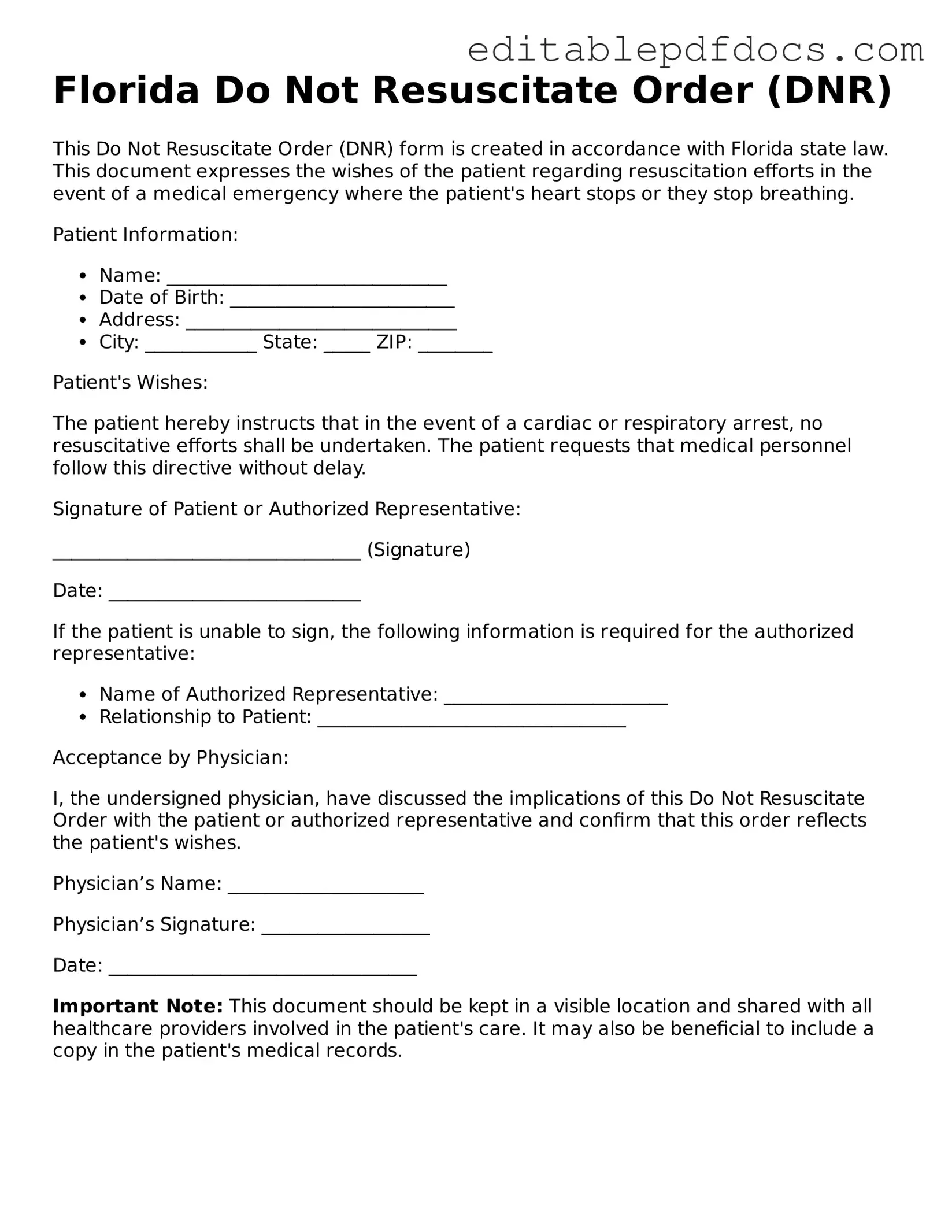Completing a Florida Do Not Resuscitate Order (DNRO) form is a critical task that requires careful attention to detail. However, many individuals make mistakes that can lead to confusion or complications during a medical emergency. Understanding these common errors can help ensure that your wishes are accurately represented.
One frequent mistake is failing to sign the form. The DNRO must be signed by the patient or their legal representative to be valid. Without this signature, medical personnel may not honor the directive. Always double-check that the form is signed before submitting it.
Another common error is neglecting to date the form. A missing date can lead to questions about the form's validity. It’s important to include the date when the DNRO is signed to confirm that it reflects your current wishes.
Many people also overlook the requirement for a witness. In Florida, the DNRO must be witnessed by two adults who can attest to the signing. If this step is skipped, the form may not be recognized by healthcare providers. Ensure that your witnesses are present and understand their role in this process.
Some individuals fail to specify their preferences clearly. The DNRO form should explicitly state your wishes regarding resuscitation. Ambiguities can lead to misinterpretation during a critical moment. Take the time to fill out the form thoughtfully and clearly.
Additionally, not keeping a copy of the completed DNRO is a common oversight. After filling out the form, it is essential to retain a copy for your records. This ensures that you can provide it to healthcare providers when needed and helps avoid any potential disputes.
Another mistake occurs when individuals do not inform their family members or healthcare providers about the DNRO. It’s crucial that those involved in your care are aware of your wishes. Open communication can prevent confusion and ensure that your preferences are respected.
Some people mistakenly think that a DNRO is a permanent document. In reality, you can change or revoke your DNRO at any time. If your preferences change, be sure to complete a new form and inform your healthcare team.
Finally, many individuals do not consider the implications of the DNRO on their overall healthcare decisions. The DNRO is just one part of advance care planning. It’s beneficial to think about how this decision fits into your broader healthcare goals and discuss it with your healthcare provider.
